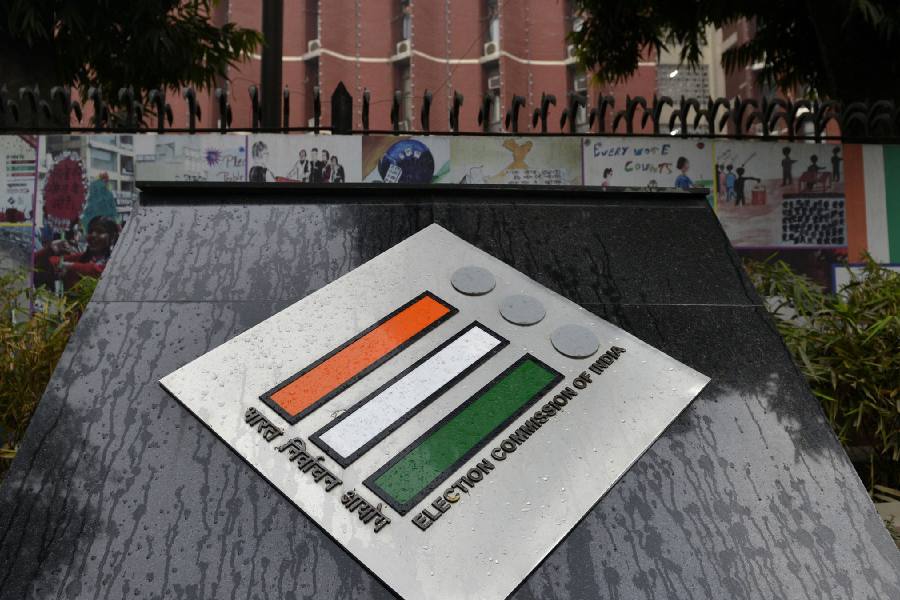A little over 20 years ago, two researchers affiliated to Oxford University produced a curious, but obscure, finding on PubMed. Using a rather small sample of university students, M. Martin and G.V. Jones argued that the month of March heralds the beginning of a period in the annual calendar that witnesses a greater number of births of left-handed children.
If the paper were to fall in the hands of William S. Inman, the good doctor would have surely concurred with the Roman horror for the Ides of March. Nearly 100 years ago, Inman had written a book, The Mental Sorrows of Left-Handedness, in which he concluded that the birth of left-handed children could be attributed to ‘overbearing, authoritative parenting’ and that the preference for the left hand was, in fact, a symbol of defiance of authority. Inman’s denunciation of the left hand was not unique: 11 years later, J.W. Comway came up with probably the earliest known modern booklet on the subject — The Prevention And Correction of Left-Handedness In Children — which advocated that left-handedness, an ailment as deadly and debilitating as ‘rickets, pneumonia and colic’, had to be eradicated so that children could become productive citizens in an industrialized order.
Even a cursory scrutiny of this embedded cultural antagonism towards left-handedness and, in effect, left-handers would reveal a fascinating complicity among philosophy, science, superstition and even linguistics in a targeted discrimination that binds the pre-industrial society with that of the industrialized world. In an engaging examination, “Historical Aspects of Left-Handedness”, which is available online as part of the Serbian Archives of Medicine, four academics have created a sort of a civilizational timeline, a chronology, of this prejudice. Ancient Mesopotamia construed sinistrality to be a divine curse; Egyptians believed all adversaries were left-handed; Pythagorus, a Greek, associated darkness and femininity with the left limb; the Romans would only accept a shake of the right hand; the Inquisition years saw a witch-hunt against left-handed women; even the Renaissance, supposedly the high hour of intellectual enlightenment and moral emancipation, could not quite stifle disapproving murmurs about Leonardo da Vinci’s artistic left hand.
The left hand continued to be a chip on cultures’ shoulder in the 18th, 19th and 20th centuries. The Italian criminologist, Cesare Lombroso — he brought criminality under the lens of science — believed that the left-handed had a natural disposition towards crime. As late as the 1940s, Abram Blau, an American psychoanalyst, was prescribing restraining, torture and even humiliation for left-handed children in his influential work, The Master Hand: A Study of the Origin and Meaning of Left and Right Sidedness.
It would only be logical to expect that etymological history, political systems and economies, too, would be afflicted by this bias. The Anglo-Saxon lyft implies weak or broken; sinistra/sinistrum, in Latin, originally evoked left, as did gauche in French. German, Italian, Russian and Mandarin, apparently, are equally ill-disposed towards the left hand. In a delicate irony, the left hand has been especially persecuted by the political Left: among the Soviet blocs, Communist Albania took the extreme step of banning left-handedness, while in democratic Japan the hidarikiki no hito — the Japanese Southpaw — began to gain a degree of respectability as late as the 1980s. Seven years ago, Joshua Goodman of Harvard’s Kennedy School presented copious amounts of data sourced from the United States of America and Britain to show that the median earnings of left-handed citizens were approximately 10 per cent lower than those of their brethren who laboured with the right hand.
The scientist, Carl Sagan — a ‘leftie’— has attributed this cultural condemnation to the left hand’s symbolic association with ‘unhygienic labour’ in non-industrialized societies. This signifies that the body, much like society, remains a site of segregation in deference to codes of purity and pollution. But a more compelling hypothesis of this stigma — the stain, arguably, faded a bit after Marian Annett presented the ‘Right Shift Theory’, proposing a genetic link with handedness — probably lies in the numerical preponderance of the right-hander. The Serbian researchers concluded that the number of left-handed humans has remained unchanged — roughly 10 per cent of the total population — since the Upper Palaeolithic Age 10,000 years ago.
The fictional Arjuna or the flesh-and-blood Albert Einstein — members of the Ambidextrous Tribe — wouldn’t think much of all the fuss about the left limb being served a poor hand. Is the matter at hand then pedantic?
Not so.
Evolutionary Psychology is looking at ‘handedness’ — the human ease with and the consequent favourable inclination towards one particular hand — as a cipher of the majoritarian impulse that coats the building blocks and institutions of collectives and communities. Handedness, then, can be reimagined as a miniature representation of the broader social and political endorsement of uniformity — and, eventually, unilateralism — that is unfolding across global politics today. The triumph of this homogeneity also necessitates the cloaking of the injustices perpetrated on the Other in the name of upholding similitude as the very embodiment of order. This leads to the clever excision from the public discourse of the horror and humiliation of the left-handed — adults and children — as they attempt to perform the most mundane of tasks: writing, signing a cheque, typing on a keyboard and so on. The impact of the taming of the left hand on young minds remains relatively under-researched.
But the Southpaw has survived.
That is perhaps because that which cannot be comprehended fully by either reason or faith survives not only as the illicit but also the exotic. The result is an interesting aestheticization of, a grudging admiration for — if not accommodation of — the oddity. In cricket, style and elegance are invariably associated with David Gower, Brian Lara, Gary Sobers — lefties all. Scholars like Michael C. Corballis have also attempted, albeit not with too much success, to link enhanced brain symmetry with ‘magical ideation’, something that, Corballis argues, makes the left-handed hypercreative and receptive to extrasensory perception.
Can the atypical be a form of political capital? The Left, banished from Bengal — a state, some say, is now ripe for the Right — would be pinning its hopes on such a hypothesis.
uddalak.mukherjee@abp.in











